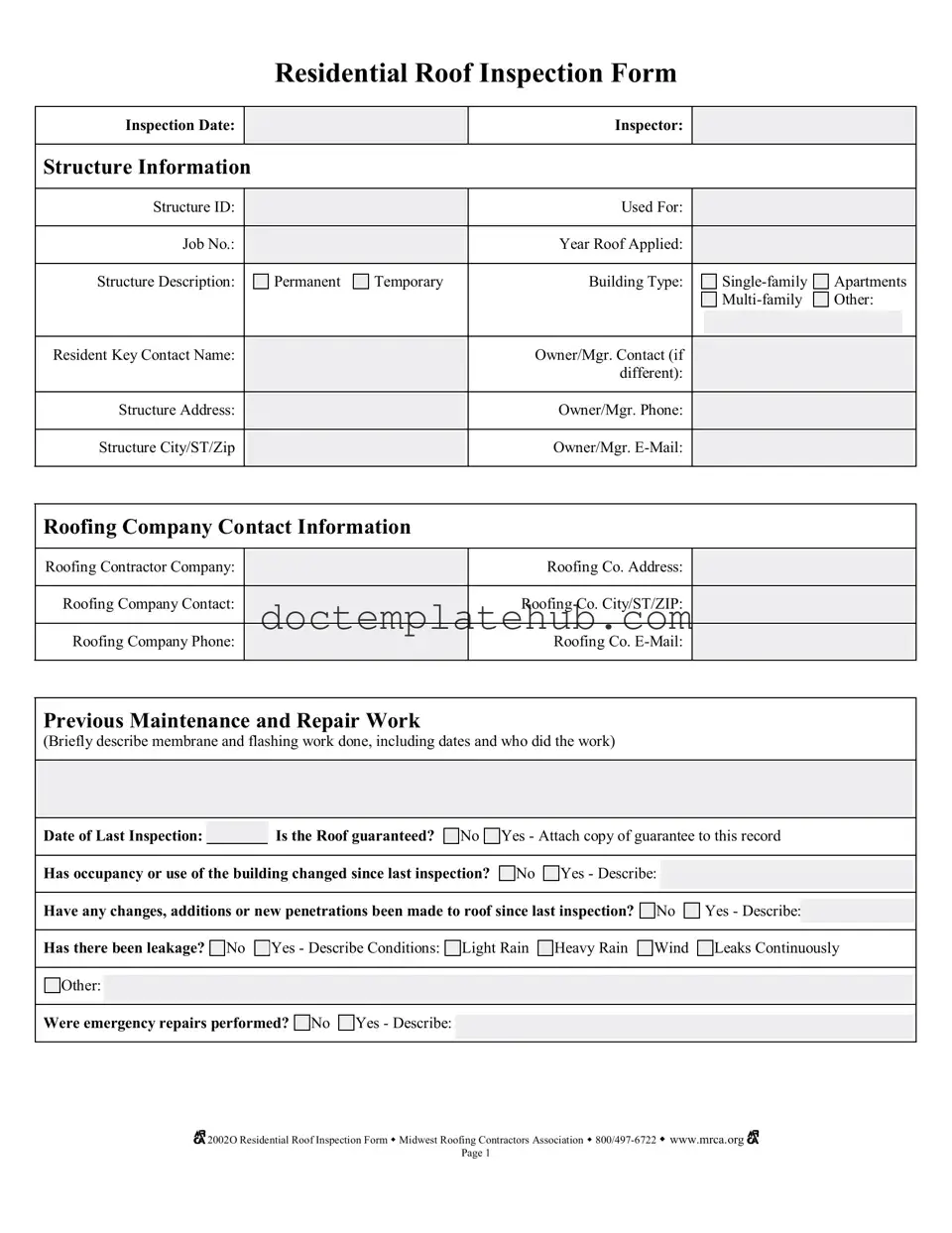What is the purpose of the Roof Inspection Form?
The Roof Inspection Form is designed to systematically assess the condition of a roof. It collects vital information regarding the roof's structure, maintenance history, and any issues that may require attention. This form helps ensure that roofs are maintained properly and any potential problems are identified early.
Who should fill out the Roof Inspection Form?
The form should be completed by a qualified inspector or roofing contractor who has experience in evaluating roof conditions. It may also involve input from property owners or managers to provide relevant information about the building and any previous maintenance work.
What information is required on the form?
The form requires detailed information, including inspection date, inspector's name, structure details, roofing company contact information, and previous maintenance records. Additionally, it asks for descriptions of any changes to the roof, leakage issues, and emergency repairs performed.
How often should the Roof Inspection Form be completed?
It is recommended that the Roof Inspection Form be completed at least once a year or after significant weather events. More frequent inspections may be necessary for roofs that have experienced issues or for buildings with high occupancy changes.
What should be done if the inspection reveals poor conditions?
If the inspection indicates that the roof is in poor condition, immediate action is required. This may include repairs or replacements to prevent further damage. The inspector should document these findings and recommend appropriate actions to address the issues identified.
What does the code system on the form signify?
The code system categorizes the condition of various roof components as Good (G), Fair (F), or Poor (P). This allows for a quick assessment of the roof's overall health and helps prioritize maintenance actions based on the condition of specific areas.
Is it necessary to attach a guarantee to the form?
If the roof is guaranteed, a copy of the guarantee should be attached to the form. This documentation can be crucial for future reference and may influence maintenance decisions and warranty claims.
What should be done if there has been leakage?
If leakage has been reported, it is essential to describe the conditions under which the leaks occurred. This information will help in diagnosing the source of the leak and determining the necessary repairs to prevent further water damage.
Can changes to the roof affect the inspection results?
Yes, any changes, additions, or new penetrations made to the roof since the last inspection can significantly affect its condition. These changes should be documented on the form to provide a complete picture of the roof's status during the inspection.
What should be done with the completed Roof Inspection Form?
The completed form should be kept with the Roof Historical Record. This ensures that all inspection data is readily available for future reference and can assist in tracking the roof's condition over time.
